Hermaphrodite Cannabis Plants: What They Are, Why They Happen, and How to Deal With Them
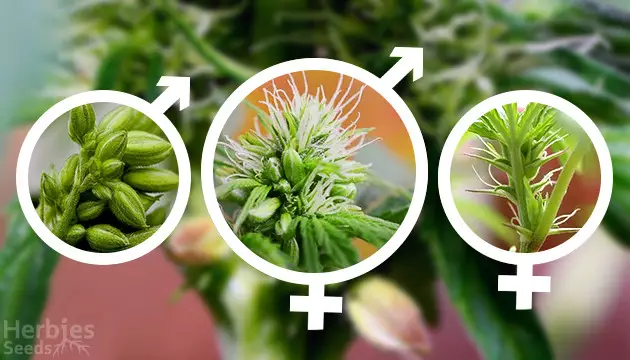
Although considered rare among humans and other animals, the existence of both male and female features, also known as hermaphroditism, is a curious phenomenon rather common in plants. In some cases, plants depend entirely on hermaphroditism in order to grow, thrive and spread within a given environment. However, when growing marijuana, it is paramount that you identify and remove hermaphrodite plants from your cannabis crop to avoid pollination that could cause your whole garden of female plants to start forming seeds, significantly lowering the quality of your harvest.
In the discussion that follows, we explore cannabis hermaphroditism in detail to understand its overall effect on the plant, ways to prevent it, stop from developing, and use hermies to your good in case hermaphrodite genes overtake. Let’s dive in!
Disclaimer: Cannabis cultivation, possession, and use must comply with local laws. This content is intended for readers in regions where cannabis cultivation and use is legally permitted. Please check your local laws before purchasing or germinating cannabis seeds.
What Exactly Is A Hermaphrodite Cannabis?
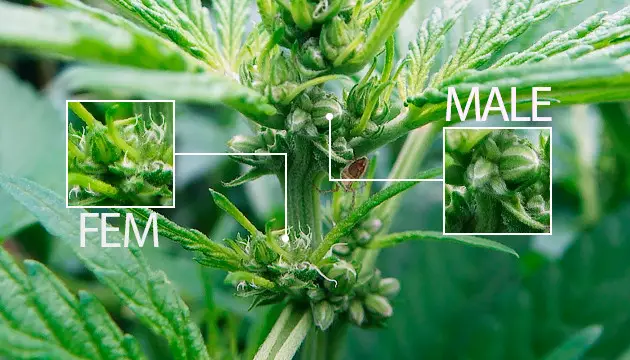
Simply put, hermaphrodite marijuana plants produce both male and female flowers. This means that an individual plant simultaneously exhibits male and female characteristics, such as pollen sacs and buds. More often than not, hermaphroditism is highly undesirable in cannabis cultivation. Why? Because even a single hermaphrodite cannabis plant can pollinate the rest of the crop, depriving you of sinsemilla – unpollinated buds with high THC content that growers use for smoking or producing cannabis products. As you’ll see later in the article, hermaphrodite cannabis plants can still be put to use. However, their potency, quality, and bud yield will never compare to that of fully female plants.
Disclaimer: Cannabis products should be consumed responsibly and in moderation. Please be mindful of your tolerance levels and consult a healthcare professional if needed.
What Does A Hermaphrodite Cannabis Plant Look Like?
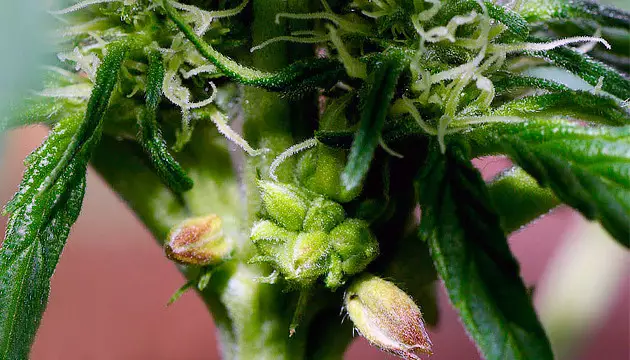
If you have some experience with pot farming, you will easily pick out the early signs of hermaphrodite plants. Just by observation, it’s easy to distinguish hermies from male or female plants:
- In their younger stages, these plants start to form pollen sacs along with female bud sites even before they are mature enough for flower production.
- Hermie weed plants also grow mixed-sex buds often referred to as “nanners” – a name derived from their banana-like shape. They are easily identifiable because they grow like a bunch of bananas.
- Seeds of hermaphrodite plants stand out because they develop outside the flower bud.
- A hermaphrodite plant also tends to be shorter than other plants because the effect of the process hampers and stunts normal growth.
What To Do When A Hermie Plant Is Found
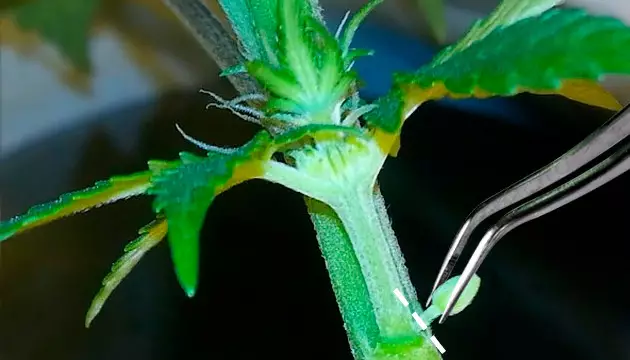
If you spot a hermaphrodite plant in your crop, it is advisable to remove it as soon as possible, as a single hermie can pollinate an entire crop and deprive you of the potent female buds every grower wants. If you’re not looking for a crop that has a lower THC level and overall lower quality, you must not only learn to identify hermaphrodite plants but also distinguish between male and female plants. On a positive note, if your plants have already entered the flowering phase and you detected a hermie that has produced just a few male flowers, you can still save the harvest.
Can You Save A Hermie Plant?
Yes, luckily, you can save a hermaphrodite cannabis plant and still harvest sinsemilla buds from it. Here are the steps to follow:
- At the first sign of a hermaphrodite plant, immediately remove it from the garden and isolate it from your healthy plants. This is essential to minimize the risk of unwanted pollination.
- Closely monitor the development of the plant’s sex organs. When you detect male pollen sacs, balls, or so-called “bananas,” carefully remove them using a pair of sterilized tweezers.
- Continue inspecting the plant daily, and remove any new male organs as soon as they appear.
If you follow these steps carefully and consistently remove all male sex organs in time, you’ll still be able to harvest the unpollinated buds you were hoping for.
How Can A Hermaphrodite Cannabis Plant Be Used?
A hermaphrodite cannabis plant can still be useful in a number of ways.
Pollinating Cannabis And Feminizing Seeds With Hermie Weed
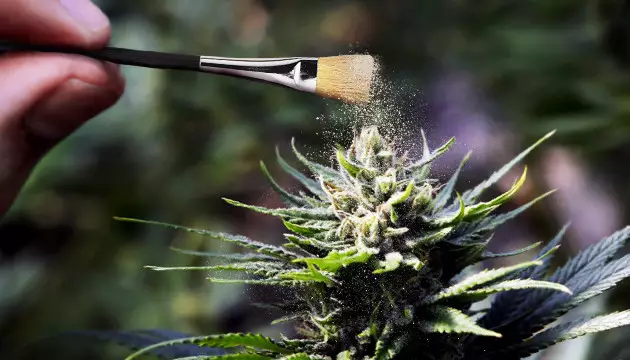
In a situation where you want to produce seeds and have no alternative methods of pollinating your crop, you can produce a hermaphrodite plant from your females and use it for pollination. Nonetheless, you need to remember that seeds from hermie plants will have a higher chance of growing into another hermaphrodite.
Similarly, a hermaphrodite cannabis plant is useful in feminizing seeds. This is the process of pollinating cannabis crops with hermie pollen so that eventually, all the seeds that grow out of it are feminized. All you need to do afterward is remove the seeds and dry them properly, then store them correctly and grow them under the right conditions.
Making Concentrates From Hermie Weed
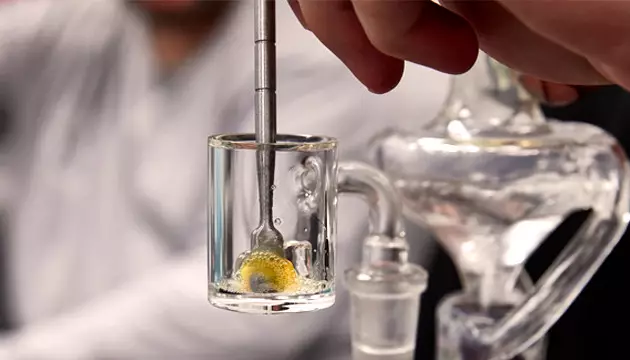
The amount of THC in hermaphrodite cannabis is very low. However, you can still make concentrates from it that will be as potent as those made from female plants.
Smoking Hermaphrodite Weed
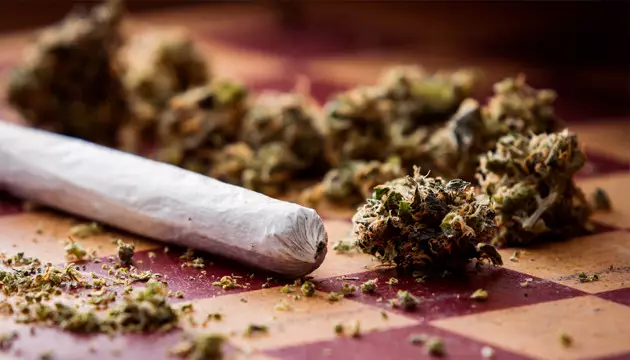
Although it doesn’t have the same potency as pure female plants, hermaphrodite cannabis can still be smoked. It may not deliver the desired effect, but there’s no harm in experiencing the difference.
What Causes Hermaphrodite Plants In Cannabis? Avoid These Factors!
If you came to read this article in order to prepare yourself for meeting a possible hermie plant in your cannabis garden, you need to know that there are several main ways through which hermaphrodite plants form.
The first is simple genetics, where the hermaphroditic features are carried along the plant’s DNA and passed down through generations. Hermaphrodite cannabis seeds that genetically acquire their traits from a hermaphrodite mother plant are referred to as “true” hermaphrodites. While these offsprings don’t necessarily become hermaphrodites, they have a higher chance of this at the slightest provocation by stressful conditions. That’s why it’s crucial to choose cannabis seeds from trusted seed banks – it brings the chance of getting a true hermaphrodite seed in a pack to the minimum.
The other cause is environmental influences. As a response to unfriendly or stressful conditions of growth, a cannabis plant will become a hermaphrodite as a coping mechanism. Conditions such as lack of water, low or too much light and lack of important nutrients may lead a plant to become a “hermie.”
In other situations, once a female plant realizes there are no male plants for pollination (fertilization), it may become hermaphroditic in an effort to procreate. Because of that, failing to harvest your crop on time increases the chances of producing hermaphrodites.
What Are The Chances Of Getting A Hermaphrodite Weed Plant?
All female cannabis plants are potential hermaphrodites. However, in ideal circumstances, chances of females becoming hermaphrodite cannabis plants during cultivation are low. The good thing is that since we already know what causes hermaphroditism, it’s easier to keep the potential of this under control.
Hermie Cannabis: The Round-Up
You’ve reached the end of the article – thanks for following through! As a reward for your interest in our blog, we’ve hidden a special promo code for an awesome bonus seed that you can add for free to your next order. Hint: open the first recommended article, your promo code might be waiting for you right there...
Disclaimer: Before purchasing and growing cannabis seeds, ensure that cannabis cultivation is legal in your region. Prior use consult your medical adviser.
Herbies Head Shop expressly refuses to support the use, production, or supply of illegal substances. For more details read our Legal Disclaimer.

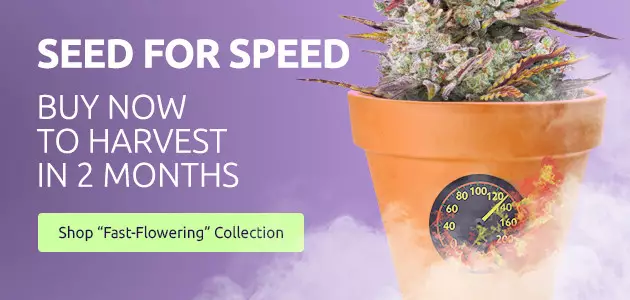
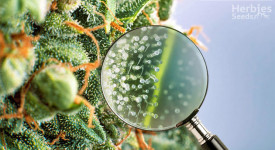

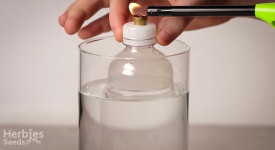









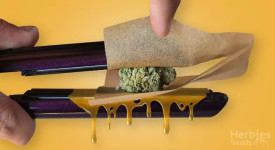

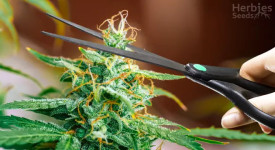
Thank you for leaving a comment for us!
Your feedback will be posted shortly after our moderator checks it.
Please note that we don’t publish reviews that: